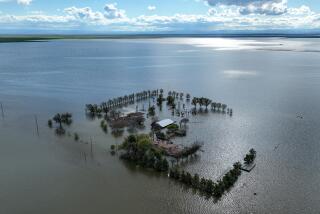Disasters and the Era of Limits
In other parts of the world, it is relatively easy to develop a profile of a region’s theoretical “100-year flood.” In Central Europe, for example, water engineers can review up to 700 years of accurate records on the rise and fall of rivers such as the Danube. Even in New England there are 300 years of trustworthy records.
Northern California, which has been experiencing what is perhaps the state’s worst flooding since the 1950s, has a much slimmer database. Weather records reach only to the mid-19th century, about the same time that some of the state’s oldest river and delta levees (many still in use) were built.
In the United States, the once-in-a-century flood became the standard to which large dams and flood control projects were built. In California, the 100-year profile keeps ratcheting up, but the days of massive new dams and control projects are over, barring some unlikely new and very expensive federal initiative. The infrastructure that exists is largely what the state will have to work with. Fortunately, that infrastructure and the people who regulate it seem to have performed well in the present emergency, given the existing limitations.
In a job where science often takes a back seat to plain human experience, regulators have controlled the flow from the storm-swollen reservoirs of the Shasta, Folsom and Oroville dams to minimize further flooding downstream.
Amid storms that wreaked havoc across five western states, the California state and local government response was prompt. The National Guard performed everything from dramatic helicopter rescues to deliveries of potable water to victims. Swift-water rescue teams were deployed, and most evacuations were orderly. But Gov. Pete Wilson and the state Legislature will have to marshal themselves quickly to match their 1986 counterparts, who fashioned a preliminary state aid package within a week of the massive flooding then.
Beyond that, the current flooding is likely to resurrect old concerns and proposed solutions, none of which come easy or cheap. In 1990, for instance, the price tag for strengthening all of the old Sacramento Delta levees was put at $1 billion. And the defeat, again, of the Auburn Dam proposal in Congress last summer attests to the reality that there will be no more big dam projects. Moving residents from flood-prone areas can be afforded only by the federal government, which took such action after the Midwest floods of 1993 along the Mississippi River.
Strictures like these put a premium on the quick flood response that state and local officials mustered in recent days. These Californians can be proud of what they have accomplished.
More to Read
Sign up for Essential California
The most important California stories and recommendations in your inbox every morning.
You may occasionally receive promotional content from the Los Angeles Times.










